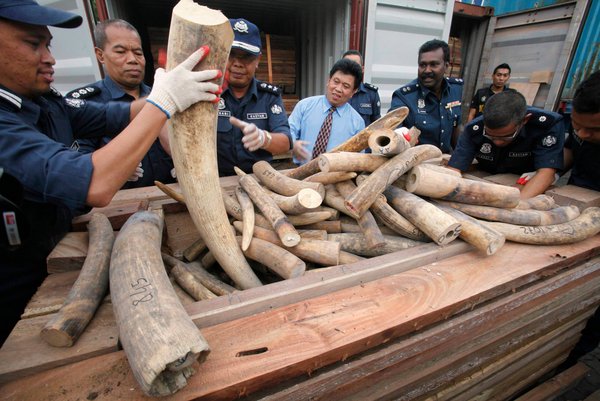 All you need to know about Ivory
All you need to know about Ivory
Antiques Roadshow expert David Battie explains the legal issues surrounding ivory, and the difference between old and new pieces. He also discusses how to clean your pieces.
Buying ivory
David spends much of his time visiting antique shops, markets, fairs and country auctions and sees thousands of newly-made netsuke (small wood or ivory carvings, commonly worn by the Japanese as toggles). However, these netsuke are in fact made in China from new ivory, from illegal sources.
Buying items made from new ivory, encourages the illegal ivory trade. It’s therefore imperative that if you’re purchasing an ivory piece you know its exact origin, age and whether it’s come from a reputable source. The buying of genuinely old ivory is legal and David himself owns one or two pieces of ivory, which are over a hundred years old and he strongly backs the laws protecting elephants.
Ivory colour
It’s very difficult to tell old ivory from new. Many people believe that ivory goes yellow with age, however some medieval ivories are pristine white, so it’s not always possible to judge by colour. The best advice is to proceed with caution and always ask vendors for the history of the piece and proof of its age.
Cleaning
Ivory has a surface that doesn’t allow dirt to penetrate it. Therefore, simply use a paint brush to dust off any surface dirt. For engrained dirt, use a spirit-based cleaner, such as methylated spirits. Never use anything water-based, such as milk, water or lemon juice.
Once cleaned with spirit the ivory may appear rather dry, as its natural oils will have been wiped away. Simply wipe your hand over the ivory and the natural oils in your skin will be enough to revive it.
Ivory legislation
Ivory is currently covered by the Convention on International Trade in Endangered Species (CITES). At the moment antique pieces are defined as those ivory specimens that were removed from the wild and significantly altered from their natural state for jewellery, adornment, art, utility or musical instruments, before June 1, 1947. Items in their natural state ie a raw rhino horn, acquired before, or indeed after this period, would be considered illegal.
However, in 1997 CITES agreed to allow very limited export of ivory and elephant products, from Zimbabwe only. It is advisable to check with the Department for Environment, Food and Rural Affairs (DEFRA) before bringing anything back.
DEFRA is the government department responsible for implementing the CITES controls and issues the relevant licences for this trade in the UK. It is a complex subject and if you intend to buy or sell any animal products it is best to check their status at the CITES website or phone the DEFRA help line on 08459 335577.
Points to remember
* It’s illegal to buy ivory that is post-1947, unless it’s from Zimbabwe, although this ivory also is subject to controls.
* Check the history of the piece and buy from a reputable dealer.
* If in doubt when buying ivory check with DEFRA.
* When cleaning ivory, use spirit based cleaners.
* To revive dry ivory, rub your hands over the surface.




















